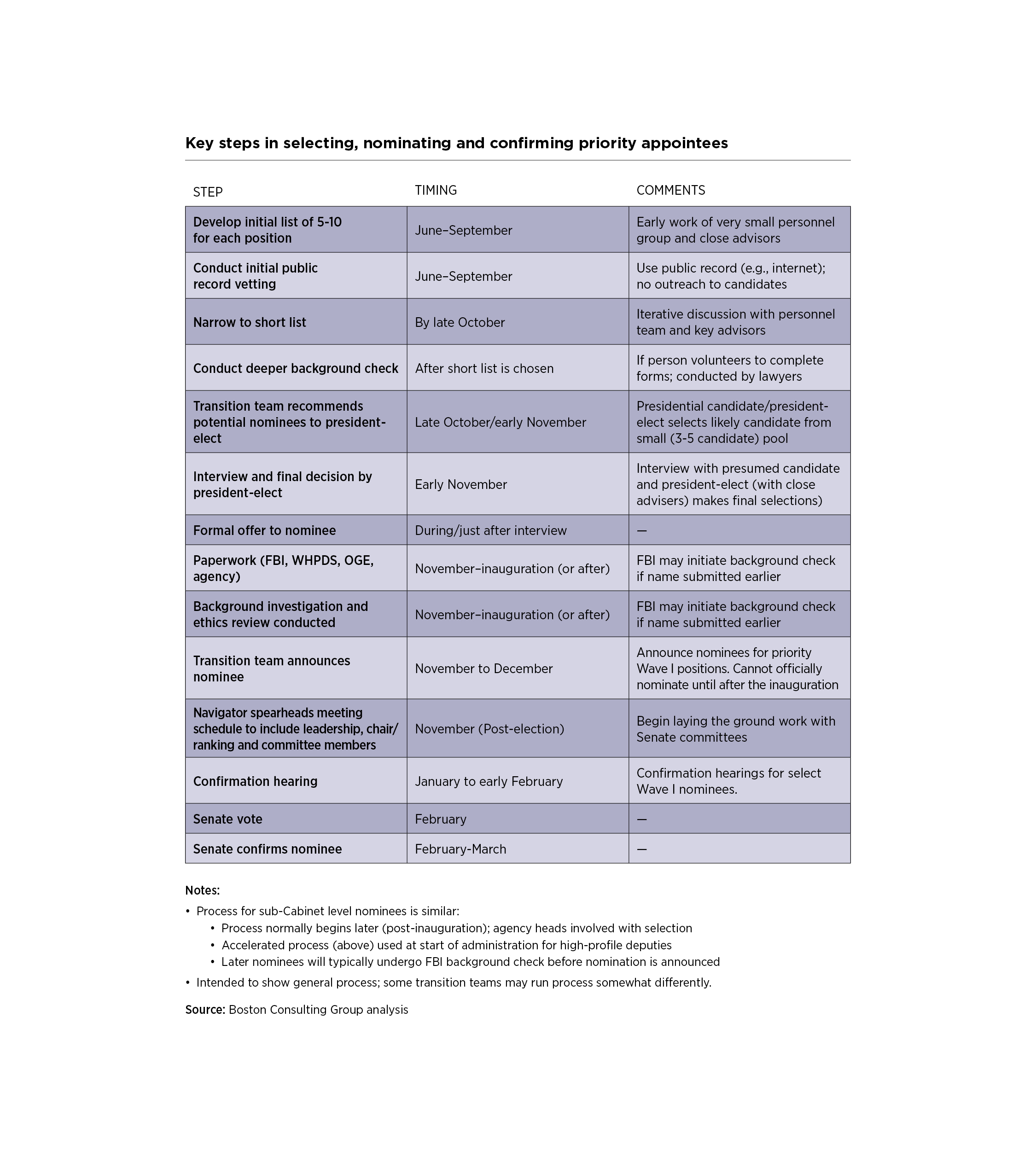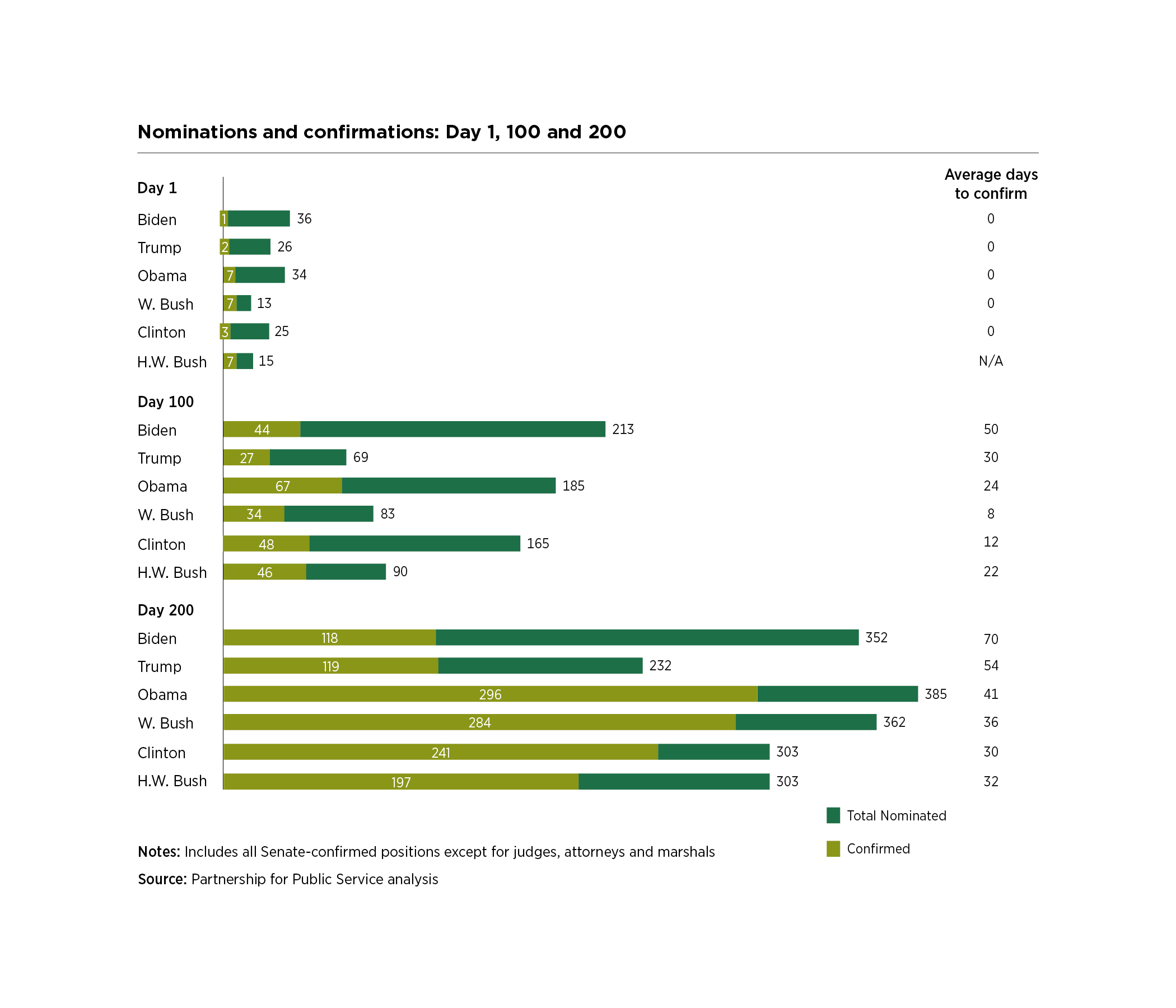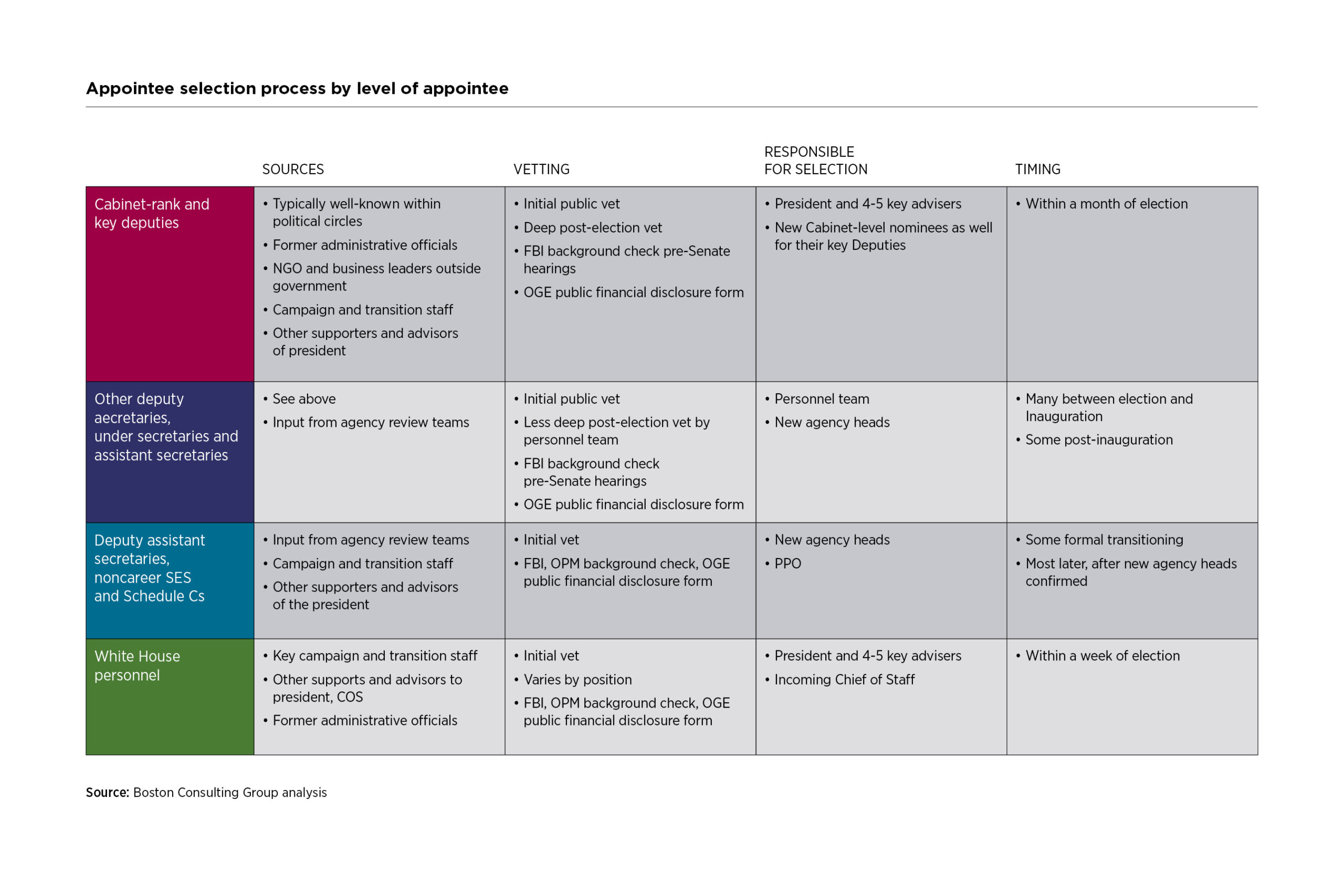Presidential Transition Guide
Presidential Appointments
The primary responsibility of the transition personnel team is to identify individuals who will serve in the new administration, conduct preliminary background checks, and help shepherd nominees through selection and, in some instances, the Senate confirmation process. This includes Cabinet secretaries, agency heads, deputy and assistant secretaries, general counsels and a wide range of other appointees.
The activities of the personnel team should begin as early as late spring of the election year with the selection of a personnel director, who should begin hiring staff to start developing personnel priorities and lists. By late summer or early fall of the election year, the personnel team should develop lists of potential candidates for top leadership positions and begin the initial vetting process using public sources. At this point, the personnel team should establish a regular rhythm for reviewing potential nominees with the presidential candidate and create a post-election schedule for the president-elect to make decisions.
The period between the election and the inauguration will be a sprint as the personnel team prepares nominees for the financial disclosure process, background investigations and, in many cases, Senate confirmation hearings.
To accomplish its goals, the team must develop a system for identifying, screening and efficiently processing nominees, often a pain point in the transition process. White House positions, which do not require Senate confirmation, are largely the domain of the incoming chief of staff and should be filled before the inauguration.
This chapter reviews the basics of presidential appointments, the goals and best practices for a robust personnel operation and examines the steps that should be taken during the pre-election period, from the election through the inauguration, and the transfer of authority from the transition to the White House. It also lays out the timeline for making appointments and the nuts and bolts of vetting and preparing presidential appointees, including those preparing for Senate confirmation.
The time it takes to confirm nominees in the Senate has grown substantially longer over time. In 2023, it takes on average twice as long to confirm a nominee as it did during the Reagan Administration. As a result, personnel and appointments teams also need to prepare plans to have holdover appointments stay on in the new administration, make use of day one Schedule C appointments, and understand the capabilities—and limits—outlined in the Vacancies Act.
The basic principles laid out in this chapter for a new president’s transition team also generally apply to second-term administrations, which historically have experienced a high turnover in senior positions prior to and following the election.
Timeline and Goals for Presidential Appointments
Identifying potential candidates for the White House and to lead the agencies as well as building their support teams should begin very early in the transition process and will continue well into the first year in office. The personnel appointment process varies considerably depending on the level and type of appointment. Positions requiring Senate confirmation have additional steps and the potential for delays. One expert described the entire system as a “production line” that requires planning and forethought to ensure that a glitch in one nomination does not derail the entire operation. The personnel process can be broken down into several steps, many of which will run concurrently based on the priority and timing of the target appointments.
Set the timelines and goals for presidential appointments
Because appointments play such an important role in defining the administration and advancing the agenda of the new president, the personnel team should set aggressive timelines and goals for filling key White House, Cabinet and sub-Cabinet positions. Goal-setting should begin as early as April or May of the election year.
A number of factors can contribute to delays throughout the appointments process. These include the new president’s availability to make decisions on top appointments, the efficiency of the decision-making process for appointments at all levels, and the availability of vetting resources in presidential personnel and Senate committees. Delays can also be caused by the need to mitigate conflicts of interest, unexpected issues that arise during the vetting process, the Senate calendar and holds from senators on nominations.
The Aspen Institute’s Commission to Reform the Presidential Appointments Process issued bipartisan recommendations in March 2012 with suggested goals and milestones, which we have built upon here:
Fully staff the White House by inauguration. These positions are presidential appointments that do not require Senate confirmation.
Fill the top 50 agency leadership positions soon after inauguration, and an additional 50 by the end of April. This should include all Cabinet secretaries, their deputies and the key members of management and leadership teams in most major agencies.
Fill an additional 300 critical positions throughout federal agencies by the August congressional recess, which is roughly 200 days into the administration.
No new administration has achieved these ambitious but achievable tar- gets. In fact, the Obama transition, in some ways the most successful of the most recent transitions, secured only 67 Senate confirmations by the 100-day mark. As the chart above shows, previous administrations have gotten off to a slow start on nominations and getting their candidates confirmed by the Senate.



